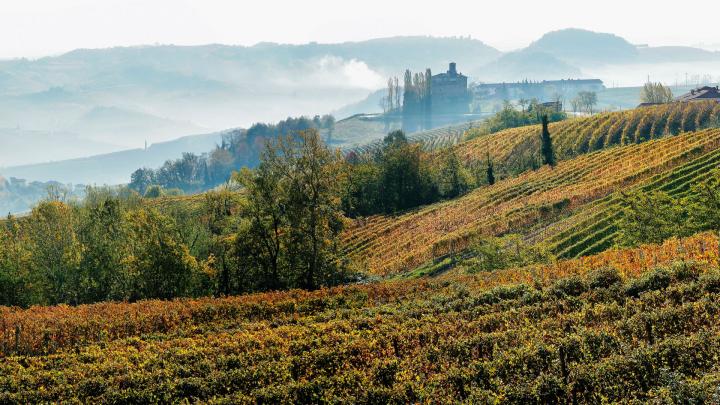If we were to ask an American where the Langhe are located, he or she might not be able to give us a thorough answer but they would surely have a clear idea of the lands of the Barolo, Nebiolo, Barbaresco and Dolcetto wines. These are great red wines, to be sipped with white truffles, a “must” these days not only for Gerard Depardieu, but also for those who have never tasted them. A destination that any tourist interested in food and wines cannot miss, the Langhe is a place for those who wish to discover history and culture by way of landscape.
A landscape that deserves to be discovered and promoted as a whole, combining geography with memory and tangible culture with a literary one. Great writers “from the province” like Cesare Pavese, Beppe Fenoglio, Davide Lajolo and Giovanni Arpino were born here and navigated their stories along that sea of hills which chase one another from Cuneo to Savona. “Frontier” writers belonging to different generations – Pavese, who had a profound understanding of America defines the Langhe as his Middle West – have entrusted a lifetime of their roots here, indicating the heart of peasant identity and the obstinate pride that derives from tilling the soil.
Arriving by train to the small station at Santo Stefano Belbo, which celebrated the centennial of Cesare Pavese’s birth in 2008, the visitor can see the home in which the writer was born and the workshop of his carpenter and musician friend, Nuto. Not much is left in this valley of the images that Pavese left us with in his “The Moon and the Bonfire”: a handful of houses, the Belbo stream (still divides the Gaminella and Salto hills) where Pavese used to swim as a child and Canelli, the beginning of a world that had nothing to do with the sowing schedule: the world of the city.
Unlike Pavese, Beppe Fenoglio, author of “Ruin” (one of the finest Italian novels written in the 20th century) remains tied to his native Alba for his entire lifetime. Johnny the partisan, while fighting in the woods that kept him away from his beloved city, nostalgically longed for its red roofs and the dull light surrounding it. The Tanaro, Murazzano, San Benedetto Belbo and Bossolasco were places of Fenoglio’s childhood as well as the settings for his stories. The Langhe are a legend for Fenoglio as well as his roots and his land. It is in the hills of the Upper Langa, between San Cassiano and San Bovo di Castino, that the political conscience of “Johnny the Partisan” (a main character of the partisan Resistance) is formed as well as the turmoil of an entire generation.
Another member of that generation is Davide Lajolo, a friend of Pavese. He left Vinchio Monferrato – a handful of kilometers from Villadeati, where the Feltrinelli family had their home – to end up at Montecitorio, combining literature with political life. Intimately bound to his land, from the peach tree on the San Michele hill to the fields of Settefiglie and the Sermassa woods, it would become the inspiring heart of his literary works along with his native town.
Another writer from Bra in the Langhe area, is Giovanni Arpino, the restless and reserved writer whose works alternated between sports journalism and literature. “Writing is not painting nor fresco art, but chiselling. I don’t think of myself as a painter, rather as a sculptor.” Arpino lived a secluded life, leaving a wake of works that from “The Novice” extending to “Il Buio e il Miele” (the Dark and the Honey) to his last work “Passo d’addio” (the Farewell pass).
Different writers and stories that, with the passing of time, maintain a common trait: they all belonged to an ungenerous land, tilled and sweat upon by dignified and proud men and women. This itinerary through the Langhe area leads one to believe that these places, belonging to the geography of the soul of those writers, are a part of a collective memory to this day. This memory not only requests that it not be forgotten, but it wishes to be transmitted along a didactic voyage that passes the “relay baton” from one generation of readers to another.

